Setting Up a Municipal Mosquito Control Program
A Practical Guide to the Design, Cost, and Implementation of Public Mosquito Control
Mosquito control is undergoing major changes in Mississippi. Instead of just routinely spraying pesticides out of trucks several nights weekly, mosquito control personnel are now trying to get the most control with the least amount of pesticides. This involves source reduction to eliminate mosquito breeding areas, larviciding areas of standing water to kill the larvae, and carefully timed, strategically placed insecticides aimed at the adult mosquitoes. In this publication, we outline the components of an integrated mosquito control program with emphasis on incorporating surveillance and larviciding into existing programs. We give general information as a review of control and surveillance techniques commonly used. In addition, we describe some health problems from mosquitoes found in Mississippi.
NOTE: Much of this publication was originally compiled by the former medical entomologist with the Mississippi State Department of Health, Ed Bowles. It has been revised several times.
The Need for Mosquito Control
Mosquitoes can affect human and animal health by both their nuisance biting and the diseases they carry (Figure 1). Mosquito-borne diseases have played an important role in our history. Epidemics of mosquito-borne diseases were once common in the United States. Outbreaks of yellow fever occurred as far north as Philadelphia during the colonial period, and epidemics took many lives in Memphis in 1878 and in New Orleans as recently as 1905. Dengue fever was prevalent along the Gulf Coast until 1945. Tombstones of Mississippians who died during epidemics can be seen in many old cemeteries in our state. Although these diseases have disappeared from Mississippi, their mosquito vectors (carriers) have not. If these two disease agents became reintroduced into Mississippi, they could be transmitted by the yellow fever mosquito (Aedes aegypti) and the introduced Asian tiger mosquito (Aedes albopictus).
At one time, malaria was well established in the continental United States, especially in the southern states. Eradication of malaria from the United States is attributed more to the short transmission season due to our temperate climate and the use of window screens in homes than to government mosquito control efforts. Cases of malaria are still reported in the United States among travelers and military personnel returning from abroad. Mississippi has several mosquito species, such as Anopheles quadrimaculatus, that could transmit the disease agent to people should malaria ever become reestablished in our state.
Two mosquito-borne diseases, St. Louis encephalitis (SLE) and West Nile virus (WNV) encephalitis, are still serious problems in Mississippi. The last major outbreak of SLE was was from 1974 to 1976 with 331 cases and 42 deaths. There were 247 cases of WNV during an outbreak in 2012. The southern house mosquito, Culex quinquefasciatus, is believed to be the most important vector of these two diseases. This mosquito can be found breeding in drainage ditches and artificial containers around houses.
With the elimination of many deadly mosquito-borne diseases from the United States, our control efforts are now mainly aimed at pest mosquitoes rather than disease vectors. However, increasing travel by U.S. citizens into countries where dengue fever and malaria are prevalent and people from those countries immigrating into the United States increase the likelihood of these diseases being reintroduced. Mosquito control continues to be an important program in public health because of the presence of WNV and SLE, as well as the potential for the reintroduction of other mosquito-borne diseases into Mississippi.
West Nile Virus Encephalitis
In the last two decades, West Nile virus (WNV) has been the primary insect-transmitted disease in Mississippi. WNV is maintained in nature in a bird-mosquito cycle (Figure 2). Several Culex species, including the common house mosquitoes Culex quinquefasciatus (the main vector), Cx. pipiens, and Cx. salinarius, and possibly also Cx. restuans, transmit the agent to people. WNV appears to be most dangerous to elderly or immune-compromised patients, but young people can become ill, as well. Since WNV has been demonstrated to amplify in the Asian tiger mosquito in the lab, it is possible that this mosquito is also involved in WNV transmission. In contrast to other mosquito-borne viruses, WNV may kill birds in the U.S., especially crows, blue jays, and raptors. Therefore, surveillance efforts to detect the presence of WNV can sometimes target reporting and testing of these types of dead birds (although many health departments no longer test dead birds). WNV illness is not as serious as some other arboviral diseases (e.g., EEE, SLE). In fact, only one out of about 150–200 people exposed to the virus will become ill, and less than 10 percent of clinically ill patients will die. Still, the public’s perception and reaction to local reports of WNV cases cause much anxiety and fear in communities. Local officials are then barraged by the public to provide mosquito control to protect them.
St. Louis Encephalitis
The St. Louis encephalitis (SLE) virus circulates naturally among birds and is transmitted by Culex mosquitoes. Humans can become infected only if bitten by an infected mosquito. Humans are actually “dead end” hosts, meaning that the virus in human blood never reaches a level high enough to infect a biting female mosquito to continue the cycle. Not all people infected with the virus develop clinical disease. However, the virus may produce abrupt onset of fever, nausea, vomiting, and severe headache in humans within 5 to 7 days after being bitten. Fatality rates range from 2 percent to 20 percent, with most deaths occurring in people 60 years of age or older. Outbreaks of St. Louis encephalitis usually occur in midsummer to early fall. Since wild birds and domestic fowl are the reservoirs of this virus, urban areas where large bird populations and abundant Culex mosquitoes are found together are prime sites for a disease outbreak.
A major SLE outbreak occurred in Mississippi in 1974–76, with 331 cases and 42 deaths. The threat for this to happen again is real. We need to develop good mosquito control practices in disease-prone areas of our state and be prepared to respond promptly to the next outbreak.
Eastern Equine Encephalitis (EEE)
As with SLE and WNV, birds are the primary hosts for eastern equine encephalitis (EEE), and mosquitoes, particularly Culiseta melanura, are the vectors from bird to bird. Culiseta melanurararely feeds on humans, though. People usually become involved as dead-end hosts when fed upon by infected salt marsh mosquitoes (Aedes sollicitans), inland floodwater mosquitoes (Aedes vexans), Coquillettidia perturbans, and a few other species. The disease will affect people of any age, with young children and infants being the most susceptible. The mortality rate is over 50 percent, and children surviving the disease often suffer from some degree of intellectual disability or paralysis. Horses are often severely affected by the disease during outbreaks. However, a horse vaccine is available that prevents horse deaths from EEE.
LaCrosse Encephalitis
In contrast to most other mosquito-borne viruses in Mississippi, LaCrosse encephalitis (LAC) maintains its cycle in nature via a small mammal-mosquito cycle. Usually, the mosquito vector is the tree-hole mosquito, Aedes triseriatus, and reservoirs are squirrels or chipmunks. Control efforts are obviously different for this disease, because it will focus on plugging tree holes where mosquitoes breed in small amounts of acidic rainwater. Mississippi recorded its first confirmed cases of LAC in 1967, but it was not often diagnosed until eight cases were identified in 2001. There have been several cases in our state since then. LAC most often occurs in children younger than 16 and can cause convulsive disorders. These facts bring extra demands from parents to local officials to implement control measures.
Dengue
The Dengue virus can be transmitted from person to person by the yellow fever mosquito (Aedes aegypti) and the Asian tiger mosquito (Aedes albopictus). Other than humans, no known bird or mammal reservoir exists for dengue. A mosquito can become infected with the virus by feeding on a person with the disease, then the virus must go through an 8- to 10-day incubation period in the mosquito before it becomes infective. The mosquito will then remain infective for the rest of its life.
Symptoms include sudden onset of high fever, severe headache, backache, and joint pains. The disease is so painful that it is sometimes referred to as “breakbone fever.” A skin rash may also appear. Infection may be very mild or completely without symptoms. In some areas, however, a complication called “dengue hemorrhagic fever” and “dengue shock syndrome” cause a high fatality rate, especially among children.
The disease has been raging in Mexico and Central and South America for the last 20 years and more recently has been found in Florida (mainly in South Florida and the Keys).
Chikungunya
Chikungunya (CHIK) is a mosquito-transmitted Alphavirus that is not usually fatal but can cause severe fevers, headaches, fatigue, nausea, and muscle and joint pains. It often causes excruciatingly painful swelling of the finger, wrist, back, and ankle joints. The virus was first isolated during a 1952 epidemic in Tanzania; the word Chikungunya comes from Swahili and means “that which bends up,” referring to the position patients assume when suffering severe joint pains. The geographic distribution of CHIK has historically included most of sub-Saharan Africa, India, Southeast Asia, Indonesia, and the Philippines, although the disease is increasing both in incidence and geographic range. There were 266,000 cases on Reunion Island in the Indian Ocean during 2005 and 2006. India suffered an explosive outbreak in 2006 with more than 1.25 million cases. Most recently, there has been a huge outbreak of CHIK in the Caribbean region with at least 1 million cases. A few cases have been reported as locally acquired in the U.S.; therefore, mosquito control personnel should be on the alert for this disease in the southern states. The vectors of CHIK are the yellow fever mosquito (Aedes aegypti) and the Asian tiger mosquito (Aedes albopictus).
Zika
Zika virus was first isolated in Uganda in 1947 and was historically transmitted by Aedes aegypti to monkeys. Aedes albopictus is suspected to be a competent vector of the Zika virus, as well. In 1952, it was found in humans in Uganda and the United Republic of Tanzania. From the 1960s to 1980s, it was found in humans on the continents of Africa and Asia. Historically, symptoms were very mild, including muscle and joint pain, fever, rash, headache, and conjunctivitis. However, in 2015 there was a correlation between the Zika virus and microcephaly. Microcephaly in infants can occur when a pregnant woman is infected with the Zika virus. Zika virus retards growth of the fetal brain, resulting in a greatly reduced brain size at birth. Microcephaly usually has a poor prognosis for subsequent neonatal development. There was a large outbreak of Zika in the Americas during 2016 and 2017, and local transmission occurred in Texas and Florida. A 2016 mosquito survey identified no Aedes aegypti in Mississippi but found that Aedes albopictus was abundant statewide; therefore, Zika certainly could be a threat in Mississippi.
Dog Heartworm
Dog heartworm is a serious canine disease occurring in the southern U.S. Almost 100 percent of unprotected dogs more than 5 years old are infected. Mosquito vectors that feed on an infected dog take in immature worms (first-stage larvae) with the dog’s blood. The immature worms undergo development within the mosquito, reaching an infective state (third-state larvae) in 9 to 14 days after entering the mosquito. These infective larvae can be transmitted to an uninfected dog when the mosquito feeds. The worms migrate to the dog’s heart and grow into adults. These adult worms produce first-stage larvae that circulate within the dog’s blood and are taken up by feeding mosquitoes to continue the cycle. The southern house mosquito (Culex quinquefasciatus) is the primary vector of dog heartworm in Mississippi, although several other mosquitoes are also involved.
Mosquito Biology
At least 61 species of mosquitoes are found in Mississippi. They come in all varieties of size, shape, and color. Many of these species have little impact upon our daily lives because they are rarely encountered by most people. They prefer to feed on blood sources other than humans, or they are not important vectors of diseases that affect us or our domestic animals.
Most mosquito programs are primarily concerned with controlling only three or four mosquito species. Every mosquito program in Mississippi targets urban mosquitoes such as the southern house mosquito (Culex quinquefasciatus) and the Asian tiger mosquito (Aedes albopictus). The total list of problem species differs, however, from one section of the state to the other. For example, salt marsh mosquitoes (Aedes sollicitans) are of major importance along the Gulf Coast, while dark rice field mosquitoes (Psorophora columbiae) and malaria mosquitoes (Anopheles quadrimaculatus) are prime concerns in the Delta.
Mosquito species differ in their breeding habitats, biting behavior, flight range, and many other characteristics. Therefore, different strategies are needed to control different species of mosquitoes. Yearly town clean-up campaigns, for example, are very effective in reducing populations of Asian tiger mosquitoes that breed predominately in artificial containers (Figure 3). Malaria mosquitoes (Anopheles) usually prefer permanent bodies of water, such as swampy or marsh areas, requiring different control tactics. Therefore, it is vital for mosquito control personnel to know exactly what species of mosquito is found within their area in order to develop an effective control strategy.
Mosquito Life Cycle
There are four stages in the mosquito life cycle: eggs, larvae, pupae, and adults. Understanding life cycles of target mosquito species is a key step in developing an effective control program. Information on flight patterns and periods of peak mosquito activity helps mosquito control technicians decide when and where to spray in order to kill the most mosquitoes for the money. Those who conduct larviciding will become even more aware of the behavior and biology of the local mosquitoes. They will be encountering the mosquitoes firsthand, visiting their breeding sites, observing their numbers and developmental stages, and gauging the response of the larvae to the larvicide used.
Mosquito Eggs
Mosquitoes can be divided into roughly three major breeding groups: permanent water breeders, floodwater breeders, and artificial container/tree hole breeders. Anopheles and many Culex mosquitoes select permanent water bodies, such as swamps, ponds, lakes, and ditches that do not usually dry up. Floodwater mosquitoes lay eggs on the ground in low areas subject to flooding. During heavy rains, water collecting in these low areas covers the eggs, which hatch from within minutes up to a few hours. Salt marsh mosquitoes (Aedes sollicitans), inland floodwater mosquitoes (Aedes vexans), and dark rice field mosquitoes (Psorophora columbiae) are included in this group. Artificial container/tree hole breeders include yellow fever mosquitoes (Aedes aegypti), Asian tiger mosquitoes (Aedes albopictus), tree hole mosquitoes (Aedes triseriatus), and cannibalistic mosquitoes(Toxorhynchites rutilus). Several species of Anopheles and Culex may also occasionally oviposit in these areas. Aedes species lay eggs on the walls of containers above the water line; they are flooded when rains raise the water level in the containers. Other species oviposit directly on the water surface.
Female Anopheles mosquitoes generally lay eggs on the surface of the water at night. Each batch usually contains 100–150 eggs. The Anopheles egg is cigar-shaped, about 1 millimeter long, and bears a pair of air-filled floats on its sides. Under favorable conditions, hatching occurs within 1 or 2 days.
Other Aedes mosquitoes lay their eggs on the moist ground around the edge of the water. When these eggs are first laid, they will die if they become too dry. However, after the embryo in the egg develops, the eggs can withstand dry conditions for long periods of time. This trait has allowed Aedes mosquitoes to use temporary water bodies for breeding, such as artificial containers, periodically flooded salt marshes or fields, tree holes, and storm water pools. Aedes mosquitoes have been carried to many parts of the world as dry eggs in tires, water cans, or other suitable containers. The Asian tiger mosquito (Aedes albopictus) was introduced into the United States in shipments of used truck tire casings imported from Taiwan and Japan in 1985. A few years later, this mosquito was probably brought into Gulfport, Mississippi, in truck tire casings bought from a Texas used tire dealer. Once these tires were stacked outside and began to collect rainwater, the eggs hatched. Now the Asian tiger mosquito is found statewide, but especially in tire piles (Figure 4) and vases at cemeteries (Figure 5).
Psorophora mosquitoes also lay eggs capable of withstanding dry conditions. These mosquitoes are often a major problem species in rice fields. Eggs are laid on the soil and hatch once the field is irrigated.
Culex mosquitoes lay batches of eggs that are attached together to form small, floating rafts. On close inspection of a suitable breeding site, these egg rafts can often be seen floating on the surface of the water. Large numbers of egg rafts indicate that a large population of larvae will be hatching out within 1 or 2 days. This information will help the larvicide technician decide what action to take to control the potential mosquito problem.
Larvae
Mosquito larvae are air breathers and, therefore, must come up to the surface periodically for oxygen.Anopheles larvae breathe through a pair of openings called spiracles on the end of the abdomen. Culex and Aedes larvae have air tubes on the end of the abdomen.
Anopheles larvae lie parallel to the water surface, supported by small, notched organs on the thorax and clusters of float hairs along the abdomen. Culex and Aedes larvae hang from the surface film with their heads pointed downward (Figure 6). Larvae feed either by slowly sweeping surface bacterial film toward the mouth, using a pair of mouth brushes, or by moving backward and forward through the water to produce a current just below the surface that flows toward the mouth. They generally feed on smaller particles, rejecting the larger ones. To be effective against Anopheles larvae, a larvicide must remain on the surface of the water for a long period, and the particles of the larvicide must be small enough to be accepted by mosquito larvae.
Mosquito larvae undergo molts (shedding of the outer skin) and have four different larval stages (or instars). These skins can often be seen floating on the surface of the water. The thick head capsule “hardens” shortly after the molt, becoming non-elastic. Therefore, larvae must shed the old skin so that they can grow. During each molt, the head of a larva will swell, increasing in width by about 50 percent. The period between molts is called an instar. The final (fourth) instar, when larvae have reached their largest size, is the stage used for species identification. Larvicide technicians should be careful to include these fourth-instar larvae in collections that are to be immediately identified. Otherwise, larvae must be allowed to molt into fourth instars. The larval stage will last from 7 to 10 days under optimum conditions for many mosquito species.
Pupae
Fourth instars will then molt into pupae. While resting, pupae float at the surface of the water. Pupae do not feed and, therefore, are not affected by larvicides that must be eaten. (However, surface film larvicides are effective for pupae.) Pupae must come to the water’s surface to breathe through their two respiratory tubes (trumpets). Generally, pupae will lie still, floating at the surface. If disturbed, they swim forward or dive to the bottom by rapidly flexing their abdomens that are equipped with two paddles.
The pupal skin splits along the back and an adult mosquito emerges. This is a critical stage in mosquito survival. Should the emerging adult fall over while leaving its skin, it will become trapped on the water surface and die. The newly emerged adult mosquito must dry its wings and separate and groom its head appendages before it can fly away.
Mosquito Breeding Sites
Artificial Containers
Just about anything that holds water will breed mosquitoes. Old washing machines, boats, horse troughs, steel drums, cisterns, plastic containers, glass bottles, and aluminum cans are just a few examples of artificial containers where mosquitoes are found. Used tires make excellent mosquito breeding sites, and tire piles are a tremendous problem for towns and cities (Figure 4). They usually hold water, and the dark, rough inner wall is an ideal egg-laying surface for species such as the yellow fever mosquito (Aedes aegypti) and the Asian tiger mosquito (Aedes albopictus).
Finding ways to properly dispose of used tires is one of the most difficult problems facing mosquito control agencies today. Buried tires hold air. Unless whole tires are buried very deeply in landfills, they will work their way back to the surface. Whole tires also take up valuable landfill space. Therefore, many landfills will not accept used tires or will charge several dollars per tire to take them. As a result, many tires are being illegally dumped in wooded areas, vacant lots, gullies, and other secluded sites. Often, local mosquito problems can be traced to one of those hidden tire piles.
Shredding tires into small pieces before disposing of them in landfills seems to be one of the best answers to the problem. However, tire shredding equipment is expensive. Very few cities or counties can afford to purchase and operate shredders or lease the services of shredder companies. Mississippi has a law governing the storage and disposal of old automobile tires. Mayors and aldermen can direct any questions they have about cleaning up tire piles to the Mississippi Department of Environmental Quality, Solid Waste Division.
Ideally, used tires should be stored under a rain shelter. A mobile tire shredder can then be brought in to grind up stockpiles of tires on-site, and then the shredded tires can be properly land-filled. Newer approvals have been granted for using tire chips on-site for sewage field lines. Alternatively, tires may be cut in half and stacked outside with the curve facing upward to prevent the collection of water. A temporary solution is to stack used tires in an open, secluded area of the landfill. Although these tires will still breed mosquitoes, the problem will be much easier to control than if tires were scattered in hidden piles throughout the town and surrounding countryside.
Measured success in controlling tire-breeding mosquitoes has been shown using granular Bacillus thuringiensis israeliensis (Bti). The granules can be broadcast over tire piles with seed or fertilizer spreaders or specialized backpack sprayers (Figure 7). Many granules will fall down into the tires where mosquitoes breed. Penetration in piles up to six tires deep has been obtained.
Some types of artificial containers cannot be disposed of or removed because they serve some useful purpose. In these situations, mosquito breeding must be controlled by applying Bti or other suitable larvicides or by preventing adult mosquitoes from entering these containers and laying their eggs. For example, cisterns used to collect rainwater should have well-screened tops. Small-animal watering pans should be emptied and cleaned at least weekly. Livestock watering troughs should also be drained weekly if mosquito breeding is found or larvicided with methoprene products. Bti can be applied to many types of artificial containers that are not used as sources of drinking water, such as water gardens and vases in cemeteries.
Tree Holes
Tree holes provide breeding sites for a variety of mosquitoes. The major species is the tree hole mosquito (Aedes triseriatus). Parks and hardwood stands in towns can be surveyed for tree holes and marked on habitat maps. These holes can be treated with Bti, sealed with a tree patch material, or filled with sand.
Water Drainage Systems
Water drainage systems that carry rainwater out of towns and cities are both manmade and natural. Culverts, storm drains, and roadside ditches that become clogged, allowing water to pool, will become mosquito-breeding areas. Keeping these areas cleaned out, removing weeds and silt, will help prevent mosquito problems. This is particularly true for those areas that hold water for a week or two after a rain but are dry during other times. Such areas will breed floodwater mosquitoes but will not hold water long enough for large populations of natural mosquito predators to become established.
Ditches that always hold water may have populations of fish, beetle larvae, dragonfly larvae, and other organisms that feed on mosquitoes. These predators help keep mosquito populations under control. If these ditches are cleared out, eliminating natural communities of predators, a mosquito problem may develop in an otherwise non-problem site. Mosquitoes will be among the first organisms to return to the pools that form in a cleaned-out ditch following a rain. In the absence of predators, the mosquitoes will develop undisturbed unless closely watched by the larviciding technician.
Use a dipper to sample ditches to determine the number of mosquito larvae and pupae living there. Collect samples along the edges of pooled areas, especially around clumps of weeds and in shaded areas. Also look for predaceous fish and insects living in the ditch. One or two mosquito larvae per dipper may not be a problem, especially if large numbers of predators are found. If large numbers of mosquito larvae are present, the site will need to be treated with Bti, methoprene, or surface oils/films to help the natural predators maintain control of the mosquito population. These larvicides will kill mosquito larvae without affecting the other organisms. Natural permanent water drainage areas should be inspected and treated as described for permanent water ditches. Disturbing these natural areas may result in more problems than will be solved.
Major mosquito problems will often be found in ditches that are polluted with discharge from malfunctioning septic tanks. The southern house mosquito (Culex quinquefasciatus) prefers a breeding site polluted with sewage. These mosquitoes are very important vectors of SLE and WNV in our state.
Ponds, Lakes, and Lagoons
Generally, well-maintained ponds and lakes produce very few mosquito problems. Large numbers of fish and other mosquito predators are usually found in these sites. Keeping weeds mowed around banks of catfish ponds, sewage waste lagoons, and lakes will help prevent mosquito breeding. If mosquito breeding is found at these sites, it will probably be along the marshier side of the water body. The area around the dam end is usually too steep to provide suitable mosquito breeding habitats. Marshy areas can be treated with Bti or other larvicides as needed.
Marshes and Swamps
Swamps are permanent water habitats that produce Anopheles, Culiseta, and other permanent water-breeding mosquitoes. Freshwater marshes, especially those that have temporary flooding, will often yield species such as the inland floodwater mosquito (Aedes vexans). Salt marshes are breeding sites of the salt marsh mosquito (Aedes sollicitans). Marshes and swamps are large areas to treat and may require larvicide application by plane or boat. Smaller sites can be covered by ground. Formulations of Bti and methoprene have proven to be very successful in these areas. Surface films or oils such as Golden Bear®, CoCoBear® or Agnique®, which form a film over the water and prevent larvae from breathing (without hurting other predators) are another larvicide option if vegetation is not too dense. The area that must be treated varies depending upon the flight range of the problem mosquito species. Generally, mosquitoes breeding in swamp areas do not range far. Salt marsh mosquitoes, on the other hand, have a flight range of up to 20 miles.
Floodwater Sites
A town should be surveyed following a heavy rain in order to locate sites where floodwater collects. These sites should be recorded on habitat maps. Floodwater areas are temporary water sites and, therefore, usually do not contain large numbers of natural predators. Accordingly, these sites will breed several species of floodwater mosquitoes if water remains for a week or longer. Such areas should be treated a few days after a rain and closely watched for mosquito breeding. Once these areas are known, they can be pretreated with a residual larvicide that will take effect once water is present and provide control for up to 30 days.
Irrigated Fields
Rice fields can produce major mosquito problems in many areas of Mississippi, especially in the Delta. The malaria mosquito (Anopheles quadrimaculatus) and the dark rice field mosquito (Psorophora columbiae) are two of the most difficult species to control in the Delta. The dark rice field mosquito can fly at least 5 miles, making control difficult. These floodwater and rice-inhabiting mosquitoes’ breeding cycles are determined by the rice irrigation cycle. Methods have been developed to apply Bti inexpensively to rice fields either at the point of water inflow or aerially with ultra-low-volume machines. Rice field mosquito control requires a cooperative effort among rice growers and city and county agencies.
Mosquito Surveillance
Purpose of Mosquito Surveillance
Mosquito surveillance should be a routine part of any mosquito control program. A good surveillance program will provide two types of information: 1) a list of the local mosquitoes (including distribution and population size estimates) and 2) the effectiveness of the control strategies being used. Routine surveillance can keep control personnel informed about locations of major breeding areas, helping identify problem sites where control should be concentrated. Carefully interpreted survey data can provide vital information. For instance, large numbers of Culex egg rafts around the edge of ditches or Aedes eggs on oviposition strips are indicators that these breeding sites should be watched closely for the next few days. Treatment should be timed to catch the heavy crop of resulting larvae during the period of their life cycle when they are active feeders. Large catches of adults in light traps stationed near treated areas may indicate that an important breeding site has been overlooked in the survey or that mosquitoes are migrating in from other areas, depending upon the species captured.
Mosquito Surveillance Network
Many municipal and county mosquito control agencies do not have the facilities or personnel available to identify mosquitoes, but the Mississippi State Department of Health and Mississippi State University have entomologists who can help confirm field identifications. Local mosquito control agencies can collect mosquitoes using methods described below and send samples to MSU or the health department. Entomologists will identify the mosquito sample and send results back to the local mosquito control agency. Mosquito control technicians or directors can consult this manual or entomologists to determine what control tactics to use to control the problem species. Eventually, however, this type of decision will become second nature to mosquito control personnel.
Fixed light traps (such as New Jersey light traps, discussed below) can provide mosquito controllers with valuable information on adult mosquito populations. Mosquito control agencies on the Gulf Coast routinely station permanent light traps in the backyards of people living in mosquito-prone areas throughout the city. These individuals sometimes are enlisted to help maintain the traps, collect the mosquitoes after each sampling, and mail the samples to the mosquito control agency. Operational expenses can be reduced by locating light traps at fire stations, city or county barns, or other facilities where they can be easily maintained.
As an alternative, mosquito surveillance programs and even larviciding activities offer excellent summer employment opportunities for local students. Students can be an economical, seasonally effective labor force; in return, the students gain experience in an applied aspect of biology, ecology, public health science, vector control, and municipal management. Personnel at Mississippi State University or the Mississippi State Department of Health can provide annual training programs (with appropriate advance notice) on mosquito control and surveillance techniques.
Mosquito Egg Surveys
Oviposition cups/jars are useful tools for collecting information on many container-breeding mosquitoes, such as the Asian tiger mosquito (Aedes albopictus), the yellow fever mosquito (Aedes aegypti), and the tree hole mosquito (Aedes triseriatus). Counting eggs collected from an ovitrap will give a good indication of the number of Aedes larvae that will hatch in an area following the next rain. Some eggs can be quickly identified to species, or at least genus, under a microscope. Also, eggs can be hatched in the lab to confirm species and be tested for such things as insecticide resistance.
The oviposition jar should be a black plastic or glass jar, or even an aluminum can with the top cut out and painted black. Fit the oviposition jar with a strip of felt-covered paper or other stiff paper (“egg paper”) clipped to the side (Figure 8). Fill the jar about halfway with water. Female mosquitoes are attracted to both the black jar and the water, and they will lay eggs on the rough surface of the strip just above the water line rather than the smooth surface of the jar. A hole punched in the side of the jar about 2 inches from the rim will prevent water from flooding the eggs during heavy rains, thereby causing many of them to hatch. Some mosquito control districts attach oviposition jars to both sides of a piece of white-painted board. This arrangement reduces the chance of oviposition jars being turned over, and, also, the contrast of black jars against the white board seems to attract mosquitoes more readily.
Larval Surveys
Most of the equipment required to conduct a larval surveillance program can be purchased in a local hardware store. A white plastic or metal dipper (Figure 9) is excellent for collecting water from artificial containers and small water bodies that are easy to reach. Larvae can then be gathered from the dipper with a medicine dropper, pipette, or meat baster and placed in a small jar, containing a little water, to be preserved later. Companies that supply mosquito control equipment sell long-handled, white, graduated dippers. These are useful for sampling ditches, margins of lakes and streams, and hard-to-reach areas. Kitchen strainers and fine-mesh aquarium nets are also good for collecting large numbers of larvae. Wash the contents of the net or strainer into a white enamel or plastic pan, and remove the large larvae with a medicine dropper. Large meat basters are ideal devices for getting samples from tree holes or artificial containers with restricted openings. Three- or four-foot sections of plastic tubing can also be used to siphon large amounts of water from tires and other similar breeding habitats. Place the end of the siphon in a strainer or large, white pan to catch the larvae. A flat-weighted metal can with a string attached is an essential tool for collecting samples from storm drain ports protected by heavy metal gratings.
Keep descriptive information (date, specific location, habitat description) for each larval sample collected. Accurate descriptions of habitats sampled, including those places where no mosquitoes are found, are important. Having a good understanding of the type of local areas that breed mosquitoes can make future routine surveys more efficient (concentrating on those areas that are known breeding sites). However, personnel should conduct a thorough survey of all water areas occasionally to ensure that previously unproductive areas have not become mosquito breeding sites.
Estimate population densities of larvae by counting the number of larvae per dip, using a standard-size dipper. Take and count three to five dips at each site. Record the number of dips counted and number of larvae in each dip. Also record information on the life stage of larvae and pupae. Noting numbers of larvae in each instar or size category (small, 0–5; medium, 5–15; large, 15+), number of pupae per dip, and water temperature can help the investigator make an educated guess as to when mosquitoes will emerge and what control efforts should be used.
Generally, larvae develop faster at higher temperatures. Large numbers of pupae indicate that a large number of adults will emerge within a few days. Since pupae do not feed, Bti or other products that must be eaten by mosquitoes will not control them. On the other hand, if most larvae are small, it may be 8–14 days before adults emerge, depending on the species and the temperature. In this case, an application of Bti may be suitable. Large numbers of pupal skins floating on the surface is a sign that adult mosquitoes have recently emerged. Experienced investigators will be able to determine the genus of many larvae based upon a few key characteristics. This knowledge will be useful in selecting the right larval control agent. For example, Bacillus sphaericus (another bacterial larvicide) is highly effective on Culex mosquitoes but not Anopheles mosquitoes.
Carefully handle mosquito larvae collected for identification. If handled roughly, distinguishing scales and other structures may fall off or become damaged, making identification difficult or impossible. Remove larvae that are to be preserved from the pan or dipper with a large-tipped medicine dropper. Place these larvae in a small jar containing water and label and carry it back to the office.
Adult Surveys
Adult mosquito surveillance is a very important part of any mosquito program. Adult surveillance will provide information on the effectiveness of the larvicide program. However, the presence of some adult mosquitoes does not mean that larviciding efforts are not working. No program will totally eradicate mosquitoes. The objective is to control mosquito populations, keeping their numbers at an acceptable level. Also, several species, such as the salt marsh mosquito (Aedes sollicitans) and the dark rice field mosquito (Psorophora columbiae), are capable of flying long distances and can move into an area from distant breeding sites.
Information gained from routine adult mosquito surveillance includes:
- Checklist of adult mosquito species in the local area.
- Estimate of adult mosquito population density and distribution over time.
- Indication of the presence of breeding sites that were overlooked.
- Identification of sites where larviciding efforts need to be increased.
- Source of adult female mosquitoes that can be used in encephalitis surveys.
The equipment needed to collect adult mosquitoes is generally more complicated and expensive than that required for collecting larvae. Adult mosquitoes are very fragile. They readily lose legs, scales, and wings when handled roughly, making identification difficult or impossible. The special collection equipment described below is designed to capture adult mosquitoes with minimum damage.
Daytime Resting Stations
Adult mosquitoes, especially Anopheles, can be found during the daytime resting in both natural and artificial shelters. These areas include houses, barns, sheds, bridges, culverts, hollow trees, overhanging cliffs, and foliage. Counts of mosquitoes using daytime resting shelters can give a good indication of population density. Mosquitoes found in these shelters can be easily collected with an aspirator (Figure 13). In areas where no natural resting shelters are found, artificial resting stations, such as wooden boxes, can be constructed and placed outdoors. Many mosquitoes that do not usually bite can be collected in this way.
Light Traps
Several types of light traps are commonly used. The CDC light trap, developed by the Centers for Disease Control, is a portable model that is widely used (Figure 10). This light trap runs on a 6-volt, rechargeable battery; a smaller version uses two D cell batteries. Mosquitoes are attracted to a small light at the top of the trap and are then sucked by a fan into a net at the bottom of the trap. The traps are usually set out and turned on at dusk and picked up early the next day. Timing devices can be installed on the traps so that they will only run during those hours of peak mosquito activity, conserving batteries. Light traps attract only selected species of mosquitoes, and catches tend to be smaller during a full moon. To increase mosquito catches, hang a container of dry ice or an octanol lure near the light trap.
The New Jersey light trap is a larger metal device, usually located at a permanent sampling station (Figure 11). This trap is often equipped with a timing device that turns it on during selected hours on certain days of the week. It works on the same general principal as the CDC light trap, except that it uses 110 AC power, and mosquitoes are sucked into a paper cup inside a jar containing a killing agent such as a piece of Vapona pest strip. The paper cup prevents mosquitoes from coming into direct contact with the pest strip. Generally, New Jersey traps require little maintenance. This trap will attract many different types of insects along with mosquitoes. If no insects are caught in the trap, it could be due to loss of power, a timer that needs to be reset, pest strips that have lost effectiveness, or a non-working light bulb, or the trap may need to be cleaned. The inside cone can be cleaned with a bottle brush. At least once per year, clean the entire trap with a degreasing agent to maintain efficacy.
Oviposition or Gravid Traps
Oviposition traps or gravid traps (Figure 12) are available through some supply companies. These devices are similar to oviposition jars in that they include a black plastic container partially filled with water as an attractant. Female mosquitoes visiting the trap to lay eggs are sucked into a net by a small fan motor like those used on many light traps. Oviposition traps are very selective for female Culex mosquitoes, and, thus, the catch data is not comparable to light trap data. These traps are not commonly used by mosquito control agencies. These traps are a good tool if a mosquito control program needs to test mosquito populations for encephalitis viruses such as SLE and WNV. Culex females can be sent to the Mississippi State Department of Health for WNV testing.
Preserving Adult Mosquitoes
Adult mosquitoes can be mailed to an entomologist for identification. Handle them very carefully so they don’t lose scales, legs, or wings. Mosquitoes taken from a New Jersey light trap using a pesticide strip in a killing jar are usually dead in the perforated paper cup. Shake these mosquitoes gently from the cup into a small, tissue-lined cardboard jewelry box or similar container. Arrange mosquitoes evenly over the tissue, one layer deep. Place a piece of tissue on top of the mosquitoes to prevent them from being shaken about. Place a label containing the necessary sample information (date, specific location, and name of collector) on top of the last layer of tissue and secure the lid on the box with a rubber band. Use one box per sample. If many mosquitoes are captured in a single trap, use extra boxes to hold the sample and bind these boxes together with a rubber band.
Use a manual or battery-operated aspirator to remove mosquitoes from net bags of light traps (Figure 13). An alternative is to remove the net bag, tie the top, and place it in an airtight container (such as an ice chest) with an open bottle of chloroform. Another option is to use ice or frozen reusable ice packets to cool down adult mosquitoes in an ice chest until back at the lab where they can be placed in a freezer. Shake dead mosquitoes from the net bags onto a piece of paper or into a small pan, and then transfer them to a small collection box. Do not handle adult mosquitoes, if possible. When necessary to pick them up, use a pair of forceps, grabbing each mosquito gently by a group of legs.
To deliver mosquitoes to an entomologist, place the collection boxes in a larger, sturdy container and fill loose spaces around the collection boxes with paper or packing peanuts. Secure the lid carefully and mark the container “fragile.” As an extra precaution, place a wisp of cotton on top of the upper tissue layer of each collection box. This will help keep the mosquitoes from being shaken around inside the collection boxes. These steps may seem a little extreme, but the identifying entomologist needs good-quality samples for accurate identification. This is especially important when initially collecting adults from an area and compiling a reference collection and species list.
Habitat Mapping and Record-Keeping
Habitat maps and records of mosquito populations and application methods used are valuable sources of information to the larvicide technician. This section describes one method of mapping and keeping records of mosquito breeding activities. Mosquito control personnel can make improvements and variations on this method or devise their own methods.
A habitat map should show all known water areas within a town, including artificial containers and floodwater areas. In the beginning of the larvicide program, record all known water areas on quarter-mile quadrants of a town street map or aerial photograph. Keep a list of GPS coordinates for these locations. Break down habitat maps by zones or areas. Another easy way to do this is using the existing voting district zones.
The best way to conduct a habitat survey is by foot, inspecting each site for evidence of mosquito breeding. This ensures a thorough inspection and allows the inspector to become familiar with the area. Record both mosquito-positive and mosquito-negative sites. Distinguish positive sites from negative sites by placing a small star (*) next to those sites where mosquitoes were found. Record water sites by type, using a numerical code. Later, when making routine larviciding rounds, the technician can determine locations and types of water habitats in an area at a glance. He or she will then know which of these sites were positive during the initial survey.
Verify habitat maps during the first couple of larvicide applications. Add newly discovered sites to the maps and list of GPS coordinates. Check locations of ditches, storm drains, and tree lines. When the technician feels comfortable with the accuracy of the maps, make photocopies and keep the master copy on file. During each larviciding trip, use a set of these copies as field maps. Record notations concerning the day’s activities on each quadrant as you visit each site. Keep maps showing each week’s activities on file for future reference on mosquito breeding trends. Keep a chart divided into zones in the office, where technicians can mark which sites were inspected and larvicided.
Some people choose to laminate each quadrant map. During routine visits to breeding sites, the technician can make notations on these maps in grease pencil. Keep these maps in a metal clipboard with a cover to prevent smudging the grease pencil. Transfer the information from the laminated maps to regular copies and file them for future reference.
Keeping records on each site can be useful. Knowing information such as previous larvicide treatments, past estimates of mosquito numbers, life stages found, and when a site was wet or dry allows the technician to predict when a particular site will become a problem. This information can be useful in other ways. Many vector-borne diseases occur in cycles. Breeding trends of local mosquito species over the past few years may indicate the likelihood of a disease outbreak. Any advance warning of a potential epidemic would allow mosquito control technicians to take precautions such as larviciding an area more frequently or, if necessary, spraying adult populations with an adulticide.
Complaint Calls
Complaint calls can be an important part of both mosquito surveillance and mosquito control. The public can provide a valuable service by calling in mosquito problems. Complaint calls can help pinpoint large populations of mosquitoes. Spray efforts can be aimed at these “hot spots” when needed, rather than spraying the entire town. This is an important component of integrated pest management (IPM). Encourage community members to notify their local mosquito control agency when mosquitoes get out of hand. Plot the complaint calls with a computer or on a large map to provide information on probable areas to target.
If possible, turn complaint calls into service requests. Gather as much information as possible over the phone, including the name, address, and phone number of the caller, time of day or night the mosquitoes are biting, and areas of standing water that the resident may know about. You might also choose to conduct a landing rate survey, where the inspector stands still for 2–5 minutes and records how many mosquitoes land on him or her.* When possible, arrange an inspection when the resident is home. This is a good opportunity to educate the homeowner on mosquito biology and control, source reduction, and personal protective measures. Plan on collecting adult mosquitoes or have the resident save a few. This will help identify the species and locate the breeding source(s).
Conduct a thorough inspection of the yard and adjacent yards. Talk with the resident during the inspection and collect samples as you inspect. Taking the time to educate residents will help to reduce the number of call-back inspections. Try to empower the homeowner. Leave literature on mosquito control and offer sound suggestions and advice. Getting residents to change their behavior can help eliminate neighborhood mosquito problems.
Record the date, location, density, stage of mosquito development, and habitat. Save a sample for identification and create a breeding site record in an Excel spreadsheet for locations that will need regular monitoring and treatment. Include information on adult mosquito rates encountered and the decided treatment. Keep the information in a file system for rechecks and control activities, historical information, and legal purposes. Also, note on the service request the time, date, action taken, and initials of the technician. This will be helpful information to have in case a citizen states that no action was taken to control mosquitoes in their area.
Mosquito Control
The best mosquito control program is an integrated program that includes point-source reduction of breeding areas, routine larviciding in those breeding areas that cannot be eliminated, and adulticiding only when necessary. In this present day of environmental consciousness, municipal leaders must try to use integrated methods of mosquito control and not just routine spraying with a fogging truck. Routine spraying can lead to insecticide resistance and inability to control mosquitoes when control is most needed.
The first phase in any mosquito control program may be to organize something like a spring cleanup campaign. Picking up and hauling away all rubbish piles, broken-down washing machines, junk cars, and bottles and cans from around houses will eliminate many domestic mosquitoes that breed right in our backyards. Activities such as cleaning out clogged street drains and culverts, cleaning up illegal dump sites, and mowing around sewage treatment lagoons will also eliminate many mosquito breeding sites. These efforts will save time and money that would otherwise have to be spent controlling mosquitoes breeding in these sites.
Wetlands are considered valuable resources. Therefore, many areas where mosquitoes breed cannot or should not be eliminated or altered. Mosquitoes breeding in permanent water areas or temporary floodwater areas can be controlled by using biological larvicides. Larvicides such as Bti will effectively control mosquito larvae when applied as needed, without killing the mosquitoes’ natural predators. Permanent water areas generally harbor many species of fish and insects that feed on mosquito larvae. Altering drainage ditches will often destroy these natural predators, allowing mosquitoes to breed unchecked as soon as water pools up again.
A good adulticiding operation should be a backup system, used when mosquito populations have gotten out of control for some reason or another. Maybe local breeding habitats formed after heavy rains were overlooked by the larviciding technician. Also, an unseasonable emergence of mosquitoes may occur during a spell of warm weather, after a natural disaster, or if an encephalitis outbreak occurs. These situations may require the use of an adulticide to contain the problem. If the spray truck has been parked, being used only when necessary and properly maintained, then the program manager can feel confident that the chemical will be fast and effective, encountering no problems with resistance among mosquito populations.
Integrated Pest Management (IPM)
Mosquitoes, like any other pests, are best controlled by a combination of pest control methods. This IPM approach saves money by reducing the amount of pesticides used and helps protect people and the environment from unnecessary pesticide exposure.
IPM for mosquitoes:
- Education
- Surveillance and Sampling
- Source Reduction
- Larviciding
- Adulticiding
The order of implementation is very important. Cities, towns, or even homeowners should never begin their mosquito control efforts by adulticiding, or even larviciding.
Control efforts should begin with education, including identifying the local mosquito species (to know what’s out there). Help with mosquito identification is generally available from the Mississippi State Department of Health and the Mississippi State University Extension Service (Figure 14). Education also means providing information to the public about where mosquitoes breed, how people can prevent mosquito breeding, and personal protection measures against them.
Surveillance is vital to community mosquito control because it tells mosquito control personnel when the problem is bad enough for spraying. Surveillance helps justify the use of pesticides around homes, people, and the environment.
Source reduction simply means finding and eliminating places where mosquitoes breed. This can be anything from old cans and tires around the house to low spots in the yard or poorly flowing ditches.
Larviciding is placing chemical or other products into water sources (or dry areas that will eventually hold water after rainfall) to kill mosquitoes in the larval (immature) stage. Some larvicides are relatively safe to people and the environment, while others are traditional chemical pesticides.
Adulticiding is spraying a fine mist into the air to kill adult mosquitoes. These days, most adulticiding is carried out with ultra-low-volume (ULV) machines that apply only about 1–6 ounces of pesticide per acre.
Source Reduction
The first step in controlling mosquitoes is source reduction, or eliminating mosquito breeding sites. Reducing the amount of breeding areas in a town will save the larviciding technician both time and work. A spring cleanup drive involving schools, citizen groups, and town maintenance and public works departments can help get rid of bottles, cans, tires, stagnant drainage ditches, and other sites that produce mosquitoes. Many types of breeding sites, however, cannot or should not be eliminated. Mosquitos in these areas will have to be controlled by applications of a suitable larvicide. Improper drainage of wetlands and indiscriminate ditching can create more mosquito problems than were there to begin with (plus, draining wetlands is illegal in many jurisdictions).
Biological Control
Many organisms have been or are being evaluated as potential biological control agents for mosquitoes. A few of these agents have been used to control mosquitoes for years. The World Health Organization has used the mosquito fish (Gambusia affinis) in many parts of the world since the 1940s. Toxorhynchites rutilus, a mosquito that is cannibalistic during its larval stages, is also used in mosquito control. Females of this species do not take a blood meal, so once they become adults, they are not a nuisance or public health risk. A nematode parasite (Romanomermis culicivorax) was at one time commercially available and has been used in many areas for mosquito control with measured success.
Each biological control agent has certain merits and restrictions. In order to use a biological control agent successfully, the larvicide technician must have a basic knowledge of the biology of each agent used. Some biological control agents are limited by salinity, temperature, or organic pollution. Further, all these agents differ in the ways in which they can be formulated, transported, stored, and applied. All of these factors must be considered when choosing the proper biological control agent for a specific habitat or to control a specific mosquito.
Larviciding
Larviciding, or killing the mosquito while in the larval stage (pupal stage included), is one of the most common methods of mosquito control used today. It is considered the best course of action for mosquito control after source reduction. When mosquitoes are in their immature stages, they are concentrated in a relatively small or fixed area. The kill occurs before mosquitoes are out flying around, causing biting nuisances, and capable of transmitting diseases to people, pets, and domestic animals. However, every place with standing water need not be larvicided. Several factors must be considered before larviciding. These include the mosquito species, larval density, stage of development, relative proximity to populated areas, size of the area, seasonality, susceptibility, equipment and larvicides selected by the program, the larvicide formulation, environmental issues, jurisdiction, rain and wind conditions, and cost.
The best pesticide is one that is extremely specific, affecting only the target pest and nothing else in the environment. It must eliminate the pest quickly before it becomes a threat and before it reproduces. It has to be easily applied, reasonably inexpensive, and nontoxic to humans, domestic animals, and wildlife. Finding all of these characteristics in a single pesticide has been the goal of many researchers. A small group of Bacillus bacteria have been developed into a line of pesticides (Bti and related compounds) that are remarkably close to this idealistic model. Some manmade chemicals like methoprene, Golden Bear®, and Agnique® also will prevent the adult mosquito from forming while not harming natural organisms or the environment.
Bti is a strain of bacteria that was isolated from a dead mosquito larva found in Israel in 1977. It proved to be very effective at killing mosquito larvae and black flies. It was also lethal to several species of midges, but had no adverse effects on other insects, fish, or laboratory animals. Bti has since been developed into wettable powder, liquid, granular, capsule, and briquette formulations that are commercially available to mosquito control personnel. It has also been formulated with growth regulators and monomolecular films.
The wettable powder formulation is not widely used. The liquid, however, is one of the most common and versatile formulations on the market. Liquid Bti is packaged in 2.5-, 5-, and 30-gallon containers and costs about $70 per gallon. It generally comes in two strengths, 600 and 1,200 international toxic units. This material can be mixed with water and applied by hand sprayer, truck-mounted sprayer, or ultra-low-volume spray machine.
The portable hand sprayer provides the best way to apply Bti to many urban breeding sites. It is important to purchase a sprayer that is comfortable and easy to carry for several hours. Consider sprayers equipped with backpack or shoulder straps (Figure 7). The spray unit should hold 2–4 gallons and be equipped with a wand with an adjustable nozzle. These backpack sprayers can range in cost from $200 to $600. Truck- or ATV-mounted larvicide sprayers (polytanks) can also be used. They cost around $300 and run from a battery supply or can be outfitted to get their power from the truck.
Make sure you cover the water surface when applying Bti. A soft, sweeping mist coverage is better than a strong stream. Bti spores are effective when they are on the surface where larvae generally filter feed. If the water is churned up by spraying a hard stream of material, many spores may sink rather than remain at the surface. Be sure to spray in shallow water around grassy edges and shaded areas where larvae tend to concentrate.
Label application rates for liquid Bti are based on the surface area of the water being treated, not depth. Application rates of 0.5–2 pints per acre are generally recommended, depending on the strength of the formulation used (check the label for specifics). The proper rate needed at each site depends on several factors, including predominant larval stage, larva density, water quality, type of water habitat, and amount of plants growing in the water.
Early-stage larvae are more readily killed by Bti than late stages. Lower dosage rates can be used when larva are mainly early stages, but the higher recommended dosage is needed for populations of late third and fourth stages. The higher the concentration of spores at the surface, the greater the likelihood that the older larvae will pick up a few spores. Bti is less effective against the late instars; plus, pupae do not feed, so they are not affected by Bti unless they fed on it before pupating. Methoprene, however, is very effective against the fourth-stage larvae, as is Agnique® (not an oil) and some oil products that spread out over the water surface, suffocating the larvae. If only pupae are present, Bonide® and Golden Bear® are options. At that point, it is too late to use Bti or methoprene, and a quick kill is needed. The residual effect of most oil formulations for killing late-stage instars and pupae is about 5–7 days.
Younger larvae will be feeding actively for a week or more and, therefore, have plenty of opportunity to ingest a few Bti spores, even when applied at the lower dosage rate. Use the higher application rate when larval population density is high, regardless of predominant instar present. Mosquito larvae are very efficient filter feeders. Large numbers of larvae will quickly filter out all of the spores applied at low rates before all larvae have a chance to feed on the material.
In areas with water polluted with septic tank discharge or in water with a heavy growth of algae, use higher rates of Bti, or even switch to a related product calledBacillus sphericus. These waters generally have higher concentrations of suspended food particles. In this case, Bti spores are competing with food particles. Using the higher dosage rate increases the chance that larvae will pick up at least some of the spores along with all of the food particles. Lower dosage rates can be used in clear, open waters (ponds, pools, rice fields, floodwater), but use higher dosage rates in heavily shaded water.
Granular Bti is generally applied to areas covered by thick vegetation, such as salt marshes and weedy ditches. It has also been used in flooded pastures, irrigated fields, and tire piles. If granules are applied to large areas of open water, winds can push them against one shore. This formulation consists of spores attached to a carrier made from ground corn cob particles. The carrier floats, keeping much of the material at the surface where most larvae feeding occurs. Different companies make different sizes of corn cob particles. As a rule, smaller particles can fall through thick grass better but may be more likely to stick to wet blades. Larger granules can be broadcast farther and are less affected by wind.
Make ground applications of granular Bti with manual or mechanical seed or fertilizer spreaders that use a whirling disk. Premeasured amounts of granular larvicide can also be applied by hand (wearing appropriate PPE; PPE requirements can be found on the label) or with a motorized backpack, which costs between $600 and $800. Horn seeders have not proven to be as effective. Generally, recommended application rates range from 2 to 10 pounds per acre (check the label). The actual rate required at each site largely depends on the same factors discussed for liquid formulations. Often, treatment should be repeated every 7 days.
Bti can also be formulated into briquets that are sold under the brand name Bactimos® (or something similar) or as “mosquito dunks.” They are usually more expensive than liquid and granular formulations. Cost per acre is about $20–$50. However, these floating briquets will give up to 30 days of treatment under normal conditions. Briquets can be used in many habitats where mosquitoes breed. They can be anchored to tree limbs or weights to keep them from floating away. Usually, one briquet will treat about 100 square feet of water surface, regardless of depth. Up to four briquets per 100 square feet may be required in heavily polluted water. Briquets can be applied to areas that flood during rainy periods such as woodland pools. These briquets will float when the area is flooded, releasing Bti. Effectiveness of Bti is not reduced by dry periods.
Insect Growth Regulators
Insect growth regulators (IGR) are a group of chemicals that kill insects by interfering with their normal process of growth and development. Methoprene is the most widely used IGR that affects mosquitoes and is often sold under the brand name Altosid® (Figure 15). The material can be applied to any larval stage. However, results are not immediate. Larvae will not die; instead, they continue their growth process and pupate. Pupae that develop from exposed larvae will die and adults will not emerge. Methoprene is only effective when applied to the larval stage. Any pupae that are present in the water during application will not die and will successfully emerge as adults.
Methoprene comes in liquid (5% and 20%), granular, 30-day briquet, and extended 150-day briquet formulations. Apply methoprene at the start of the mosquito season. It can be used in a wide variety of places, such as storm drains, fountains, cesspools, waste treatment and settling ponds, abandoned swimming pools, and other manmade sites. The EPA has even approved methoprene use in livestock watering troughs. Briquets can be tossed into the water. They will sink to the bottom and slowly release the IGR.
Residual effects range from 7 to 10 days for liquid to 30 to 150 days, depending on the formulation. Briquets are designed to withstand wet and dry periods to extend the residual effect through periods of heavy rainfall, flooding, etc. Mosquito control personnel must maintain current knowledge about approvals and use of larvicides and are encouraged to attend annual training conferences offered in the state.
Adulticiding (Spray Trucks)
Only selected chemicals are approved for use in thermo-fogging or ultra-low-volume (ULV) units in Mississippi. For the most part, spraying with trucks is done with ULV machines, as thermo-fogging is older technology. ULV spray machines put out a very fine mist with small droplet sizes (Figure 16). Consult the Mississippi Department of Agriculture and Commerce, Bureau of Plant Industries (Starkville, MS; 662-325-3390) for a current list of approved chemicals, mixing rates, and application rates. Different formulations are used in thermo-fogging units than are used for ULVs. Be sure you purchase the correct formulation for your machines.
Always read the chemical label before buying, mixing, loading, applying, and storing insecticides. A few of the adulticides available are restricted-use pesticides and must be purchased and applied under the direct supervision of a certified pesticide applicator. All applicators should review and carry the chemical labels and material safety data sheets (MSDS) with them while conducting control activities. Insecticide labels and MSDS contain important information concerning the application rate, personal protection measures, statements of practical treatments, environmental hazards, and storage and handling procedures. Always remember, the label is the law.
For best results, adulticiding should be done after sunset (there are a few exceptions). Chemicals sprayed during the day may be carried upward by thermal currents. Also, mosquitoes generally are resting during the day in protective foliage out of the pesticide’s reach, while bees may be exposed as they gather nectar. It is important to kill mosquitoes, not bees. Spray trucks should be driven slowly; usually 10 miles per hour. Be sure to drive at the same speed the entire evening to ensure a uniform rate of application.
Ultra-low-volume sprayers cost from $7,000 to $17,000 (Figure 17). One of the most widely used ULV sprayers has an electric starter, manual and variable capabilities, and a GPS tracking system. These machines cost between $12,000 and $15,000. Machines must be kept in proper working order and calibrated yearly. In ULV machines, calibrate both flow rate and droplet size; in thermo-foggers, calibrate the flow rate only. Often, the vendor who sells the spray machine will help with calibration and droplet testing once a year. Change the oil on ULV units after every 50 hours of use; grease bearings on the blower every 6–8 hours; check filters twice a year; and replace chemical tubing yearly. When using corrosive chemicals, flush machines after each use. Always route the pesticide lines outside of the truck cab.
Larviciding versus Adulticiding
Results of a survey conducted in the spring of 1985 indicated that 148 city and county mosquito control programs were in operation within Mississippi. All but five of these programs relied exclusively on adulticiding for mosquito control, which is not an effective strategy. More than 84 percent of these programs used only malathion. More recent surveys have indicated hardly any use of malathion, with more and more mosquito control personnel using various formulations of pyrethroids (permethrin mostly) for adult mosquito control. These products are sold under a variety of brand names.
Routine mosquito spraying has been going on in Mississippi for a long time. During the mosquito season, fog trucks roll up and down the urban streets one or two times per week. Continuous exposure to pesticides does not kill all mosquitoes; those that can survive the pesticide treatment are resistant to the chemical. Surviving mosquitoes can reproduce and pass this resistant trait along to the next generation. Eventually, the pesticide is no longer effective.
Adulticiding operations also continuously expose the public to pesticides. The effects of these chemicals could be particularly severe for those people who have asthma or other respiratory problems. Applicator personnel may be in danger of overexposure if proper safety precautions are not carefully practiced. Pesticide labels carry warnings about their toxicity to wildlife. However, pesticides are generally safe when used according to their label directions.
Larvicide programs are targeted at controlling the mosquito larvae (immature mosquitoes) before they leave the water. This strategy can be the most effective, most economical, and safest way to control mosquitoes. Programs that concentrate only on adult mosquitoes are attempting to solve a problem that has gotten out of hand. After all, it is adult mosquitoes, not the larvae, that pass along diseases such as encephalitis to human victims.
It is best for public health and the environment to avoid using chemical pesticides when possible. A larvicide program uses biological methods to control pests without jeopardizing non-pest and beneficial organisms. When fog trucks remain parked until they are really needed (as a back-up system during severe outbreaks), you reduce the chance of pesticide resistance buildup and lessen the amount of chemicals that the public is exposed to.
Larviciding is also more economical than adulticiding. Purchasing a fogging machine and truck for an adulticiding program can cost as much as $50,000 (Figure 18). Small towns may spend from $10,000 to $15,000 per year for pesticide and oils. Operational and maintenance costs must also be figured into the estimate. Therefore, the expense of an adulticide program is beyond the reach of most small towns and communities.
A larvicide program, on the other hand, can be conducted using one or two backpack sprayers (ranging from $80 each for a sprayer that sprays only liquid to about $800–1,000 each for backpacks that distribute liquid, granules, pellets, and dust) and a couple of gallons of Bti (about $70 per gallon), depending on the size of the town and the extent of the breeding areas. More extensive larviciding programs may need heavy equipment to apply a variety of products (Figure 19).
Granular Bti generally costs about $4 per pound. Methoprene (Altosid®) is another excellent and cost-effective larvicide that comes in various formulations. The standard “briquette” or pellet of Altosid® costs about $4 each. Initial material costs may be higher than most Bti products, but they have an extended residual, making the cost per day comparable to other products.
More recent labeling states that methoprene is target-specific and does not harm mammals, waterfowl, or predatory insects. Non-target studies have reported that methoprene has very little effect, if any, on 35 species of non-target organisms and can be applied to fish habitats. Another larvicide is a biodegradable (Agnique®) oil emulsion sprayed as a larvicide. It acts by suffocating mosquito larvae as they float at the surface to breathe. These surface oils are also safe to use in fish habitats and in the presence of biological predators.
Empowering Mosquito Control Personnel
Mayors, aldermen, and county supervisors should take an active role in mosquito control to ensure efficiency and limit liability. If a lawsuit alleges that a town’s fogging truck caused a respiratory problem among residents, the municipality may be liable if the chemical in question was not applied correctly with a properly calibrated machine. One way to avoid this is to send mosquito control personnel to workshops and seminars for certifications and training. One such workshop is the annual Mosquito and Vector Control Workshop conducted by the Mississippi State Department of Health and other agencies. This meeting is usually held in March of each year in or near Jackson. In addition, mosquito control workers should read this publication and others available through the MSU Extension Service concerning safe and effective mosquito control.
Mosquito Control and the Public
Providing public information and soliciting public support is vital to the success of any mosquito control effort. Citizens should understand the effects they have on local mosquito populations. Inform the public about problems caused by artificial containers around their homes. Encourage residents to clean up their neighborhoods and rid their yards of breeding sites. Promote town cleanup drives, and sponsor mosquito seminars for schools and local organizations. Provide information on larviciding activities, and remind people of the potential public health threat mosquitoes represent. Invite citizens to call in complaints concerning severe mosquito problems. Mosquito control is a public effort. Without the help and support of citizens, mosquito control personnel will be fighting a losing battle.
Figures
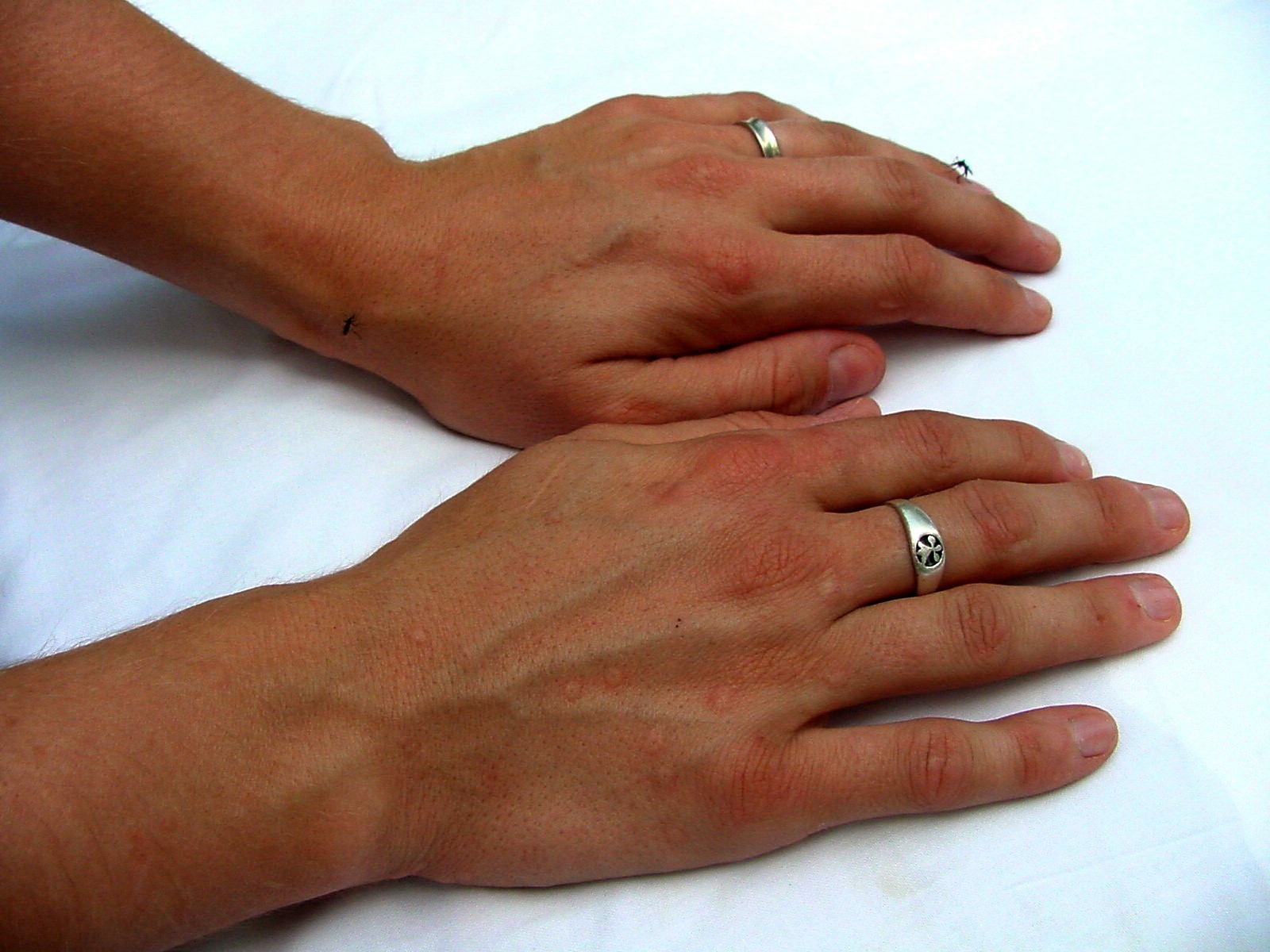
Photo © 2004 by Jerome Goddard, PhD.
Photo courtesy U.S. Food and Drug Administration.
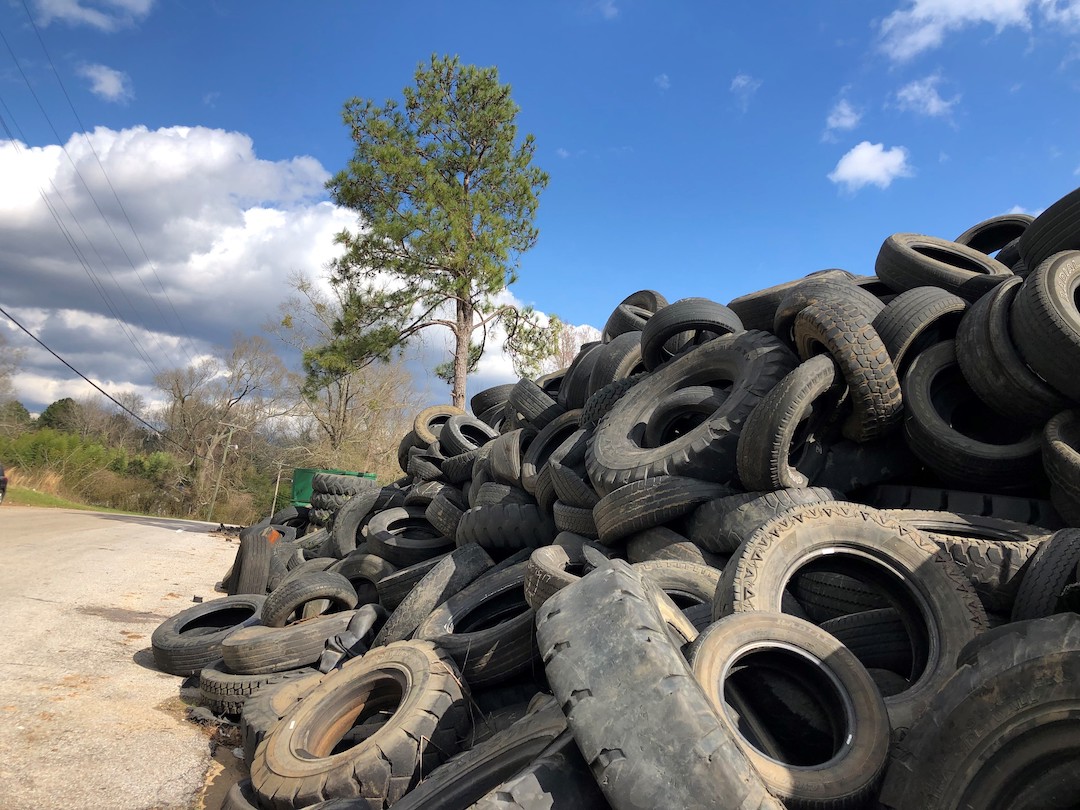
Photo © 2019 by Jerome Goddard, PhD.
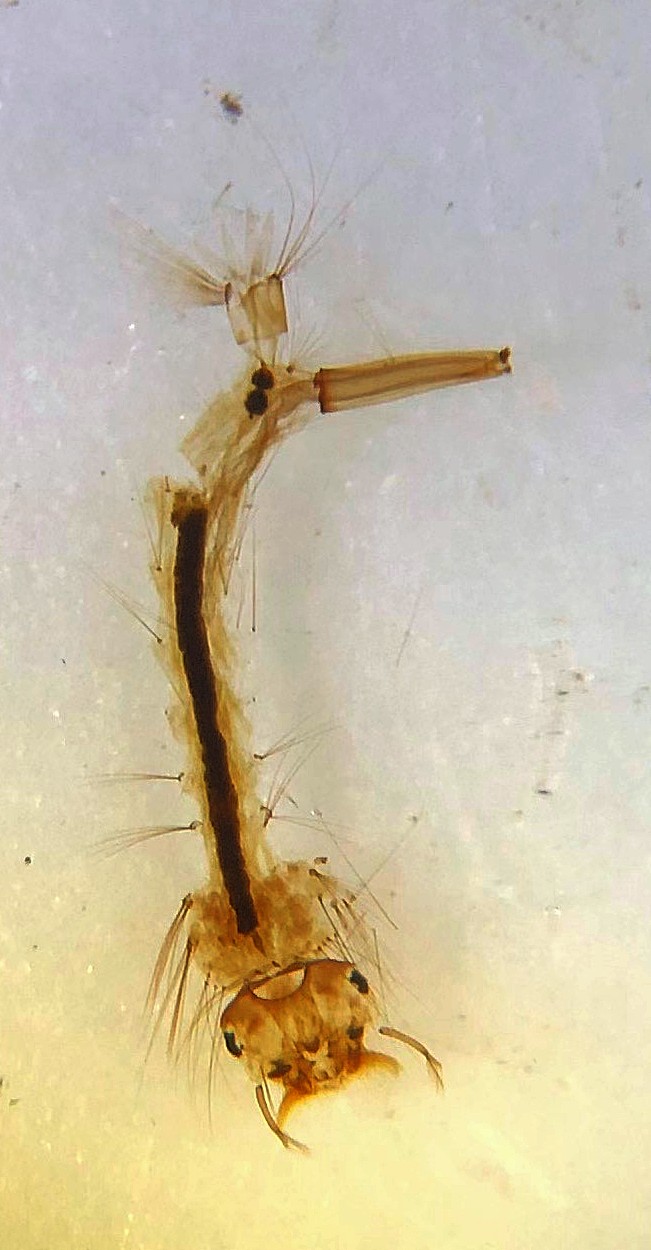
Photo © 2020 by Jerome Goddard, PhD.
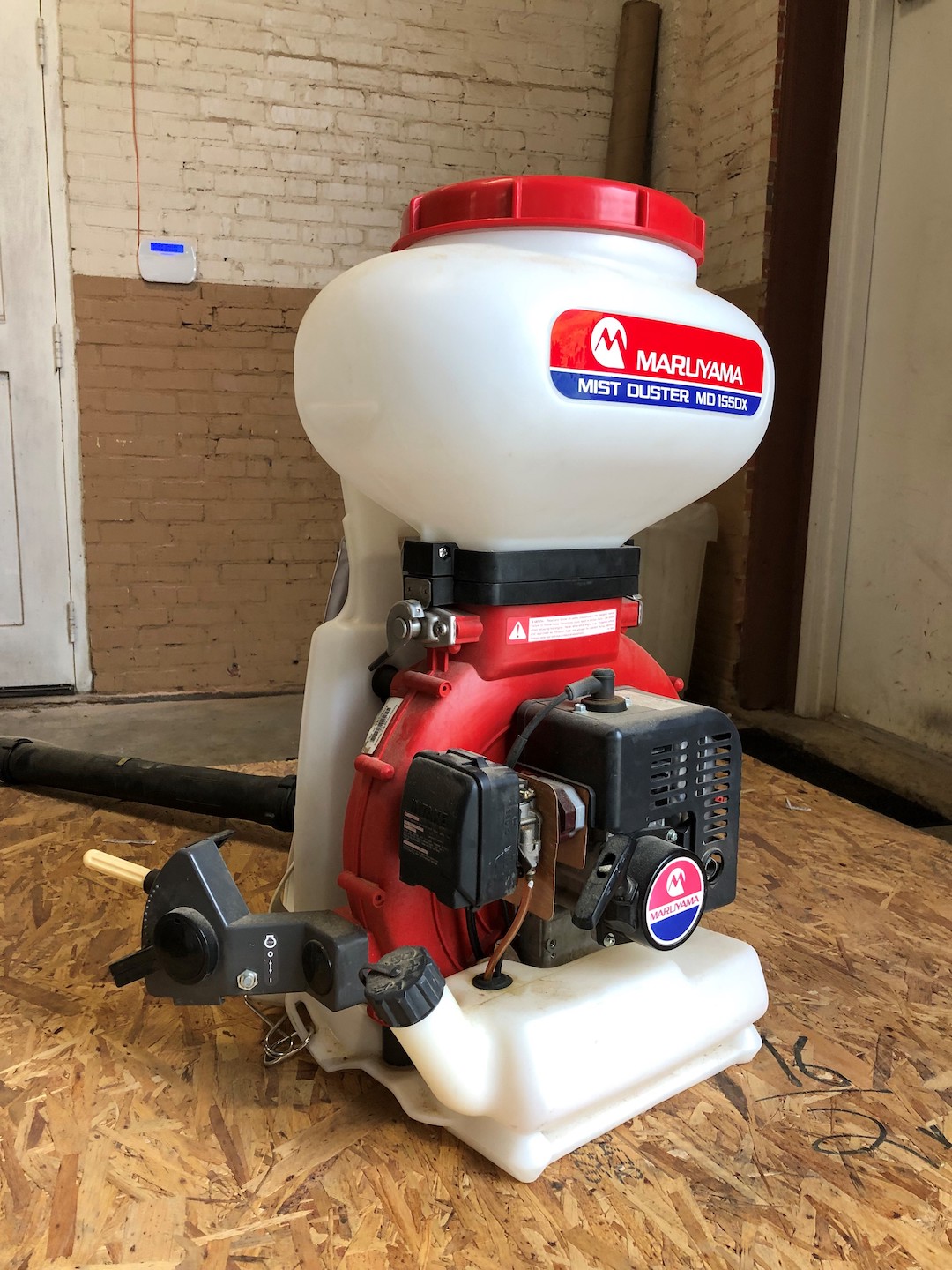
Photo © 2020 by Jerome Goddard, PhD.
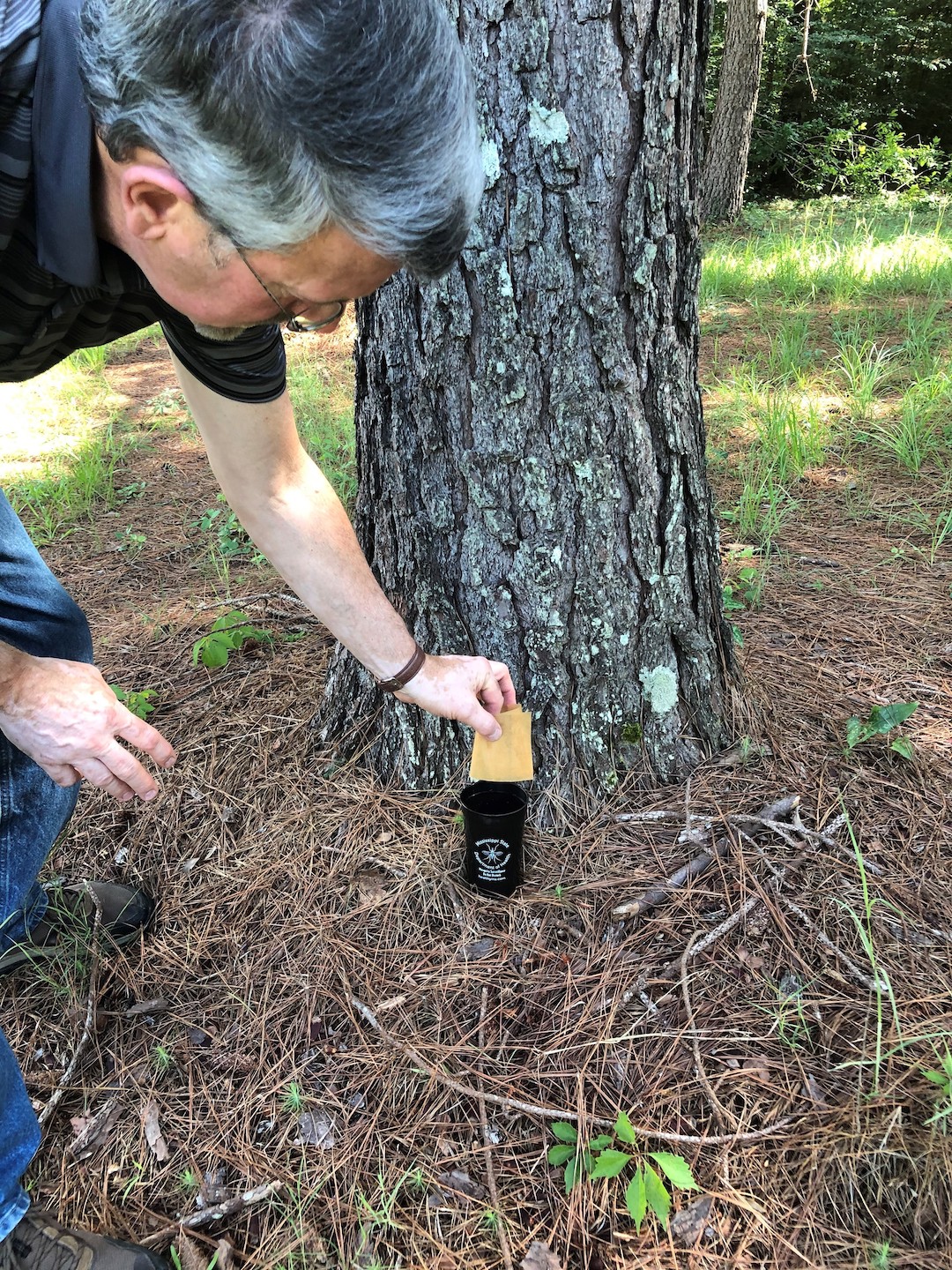
Photo © 2020 by Jerome Goddard, PhD.
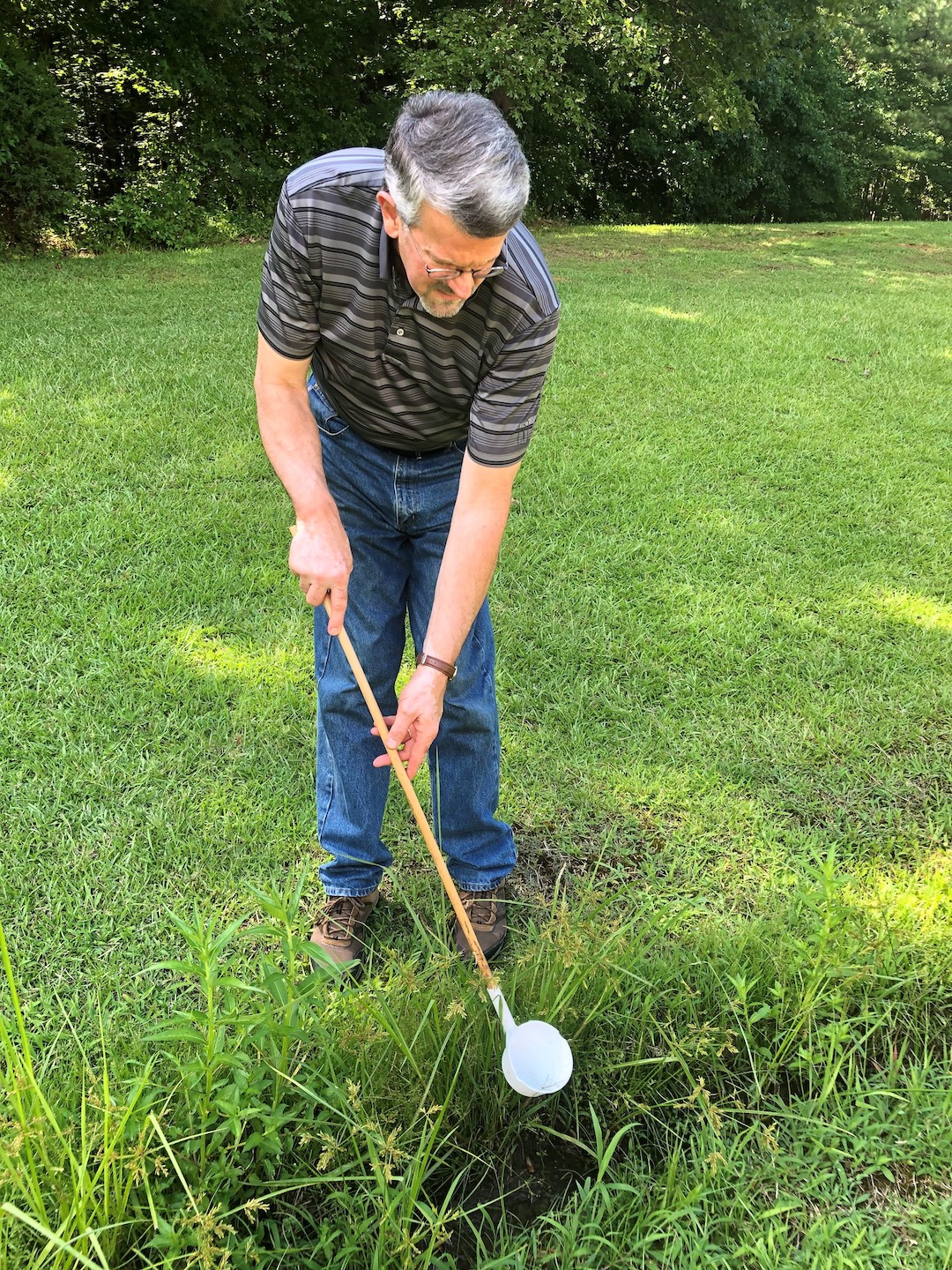
Photo © 2020 by Jerome Goddard, PhD.
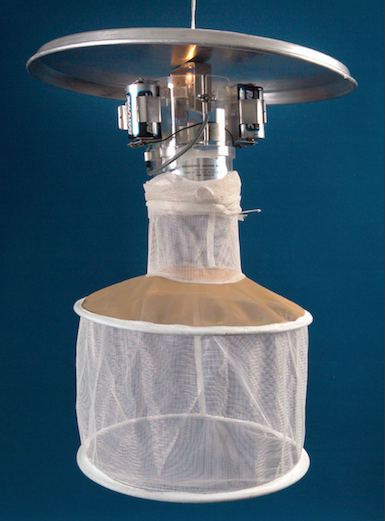
Photo courtesy Centers for Disease Control and Prevention.
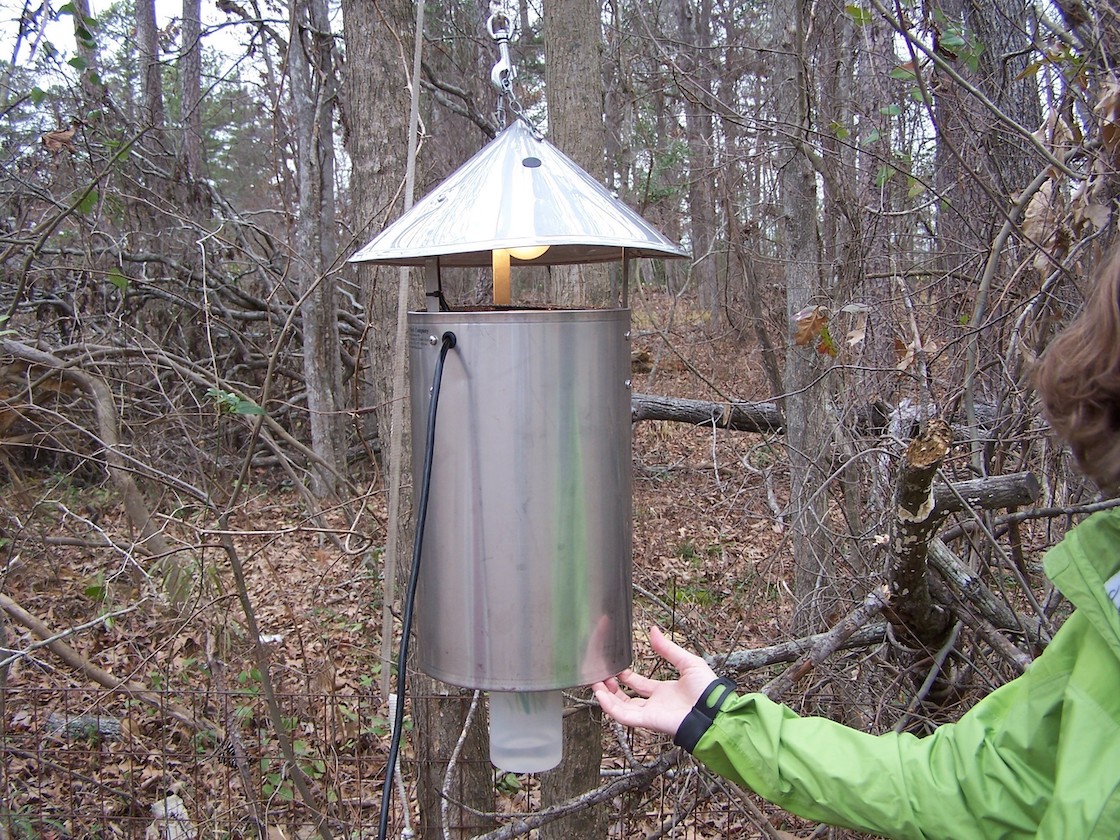
Photo © 2006 by Jerome Goddard, PhD.
Photo © 2006 by Jerome Goddard, PhD.
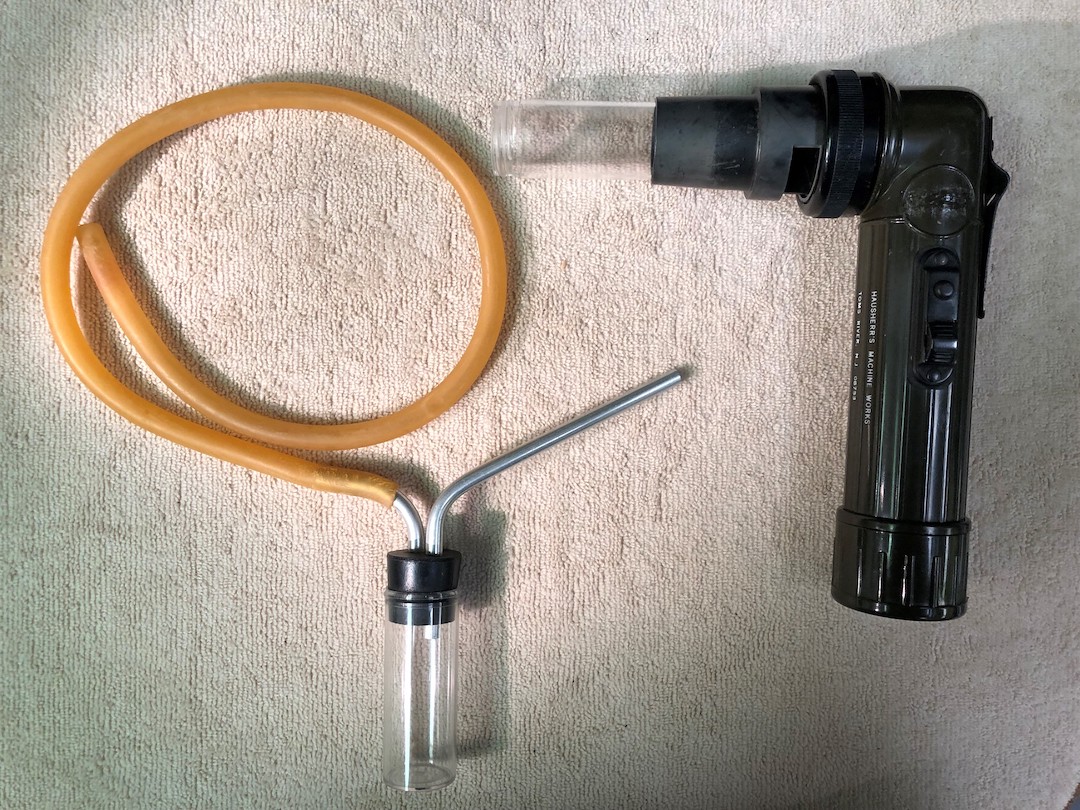
Photo © 2020 by Jerome Goddard, PhD.
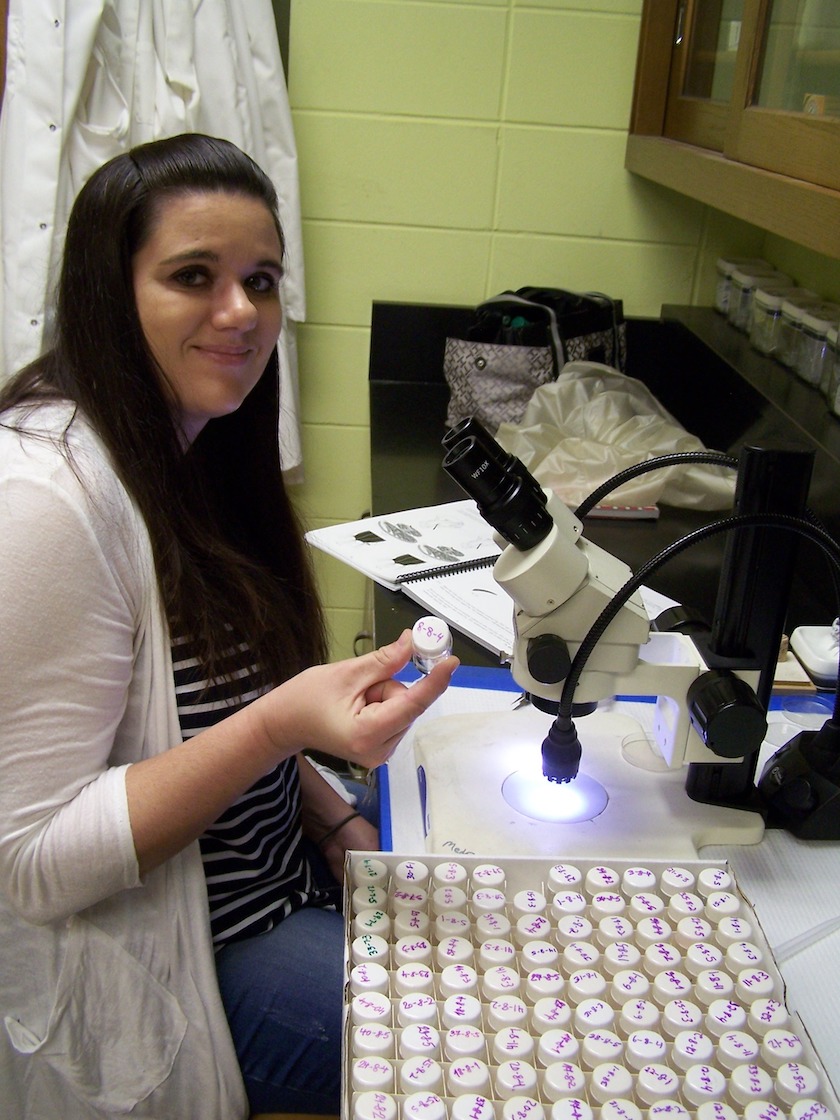
Photo © 2006 by Jerome Goddard, PhD.
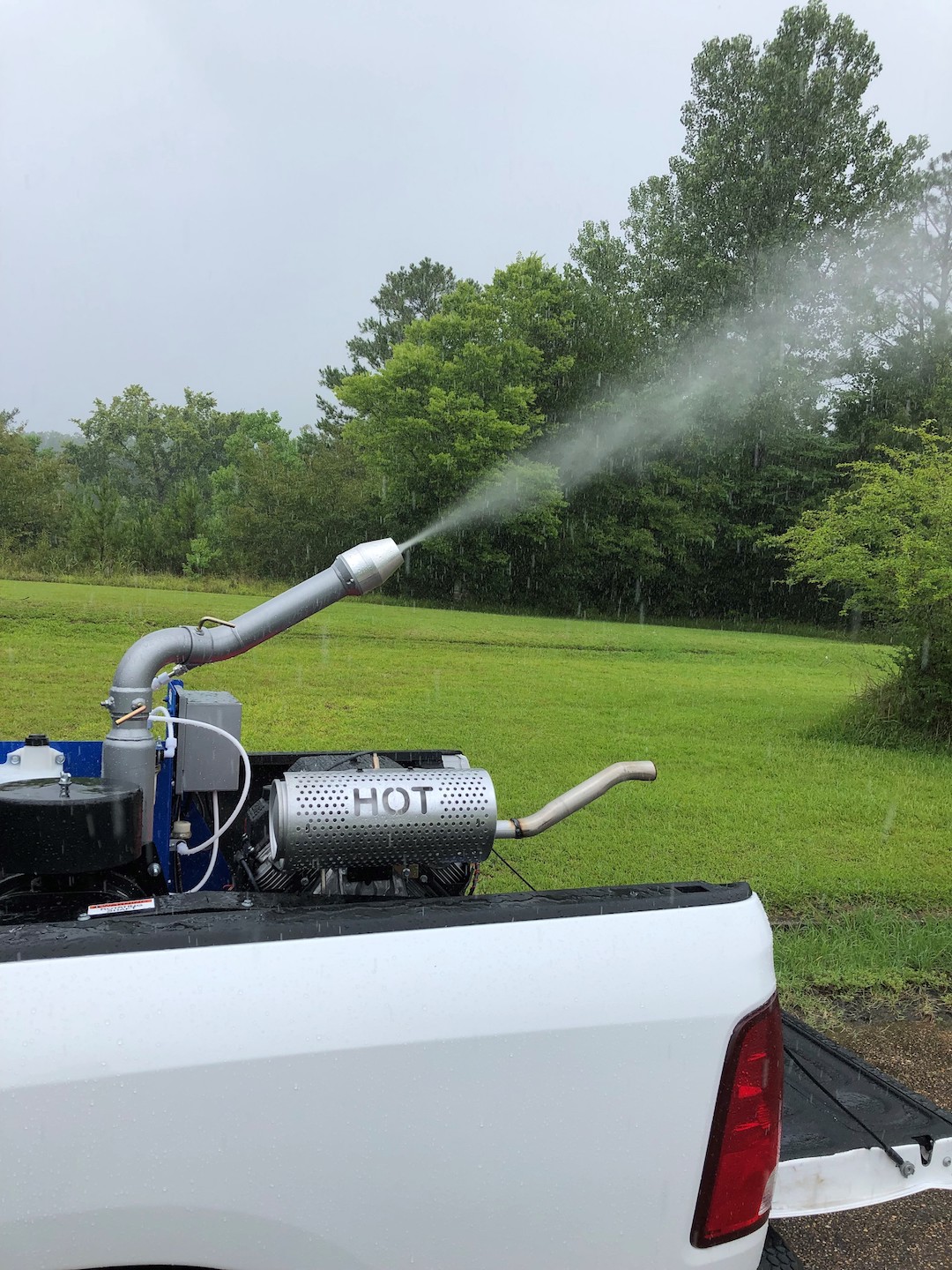
Photo © 2020 by Jerome Goddard, PhD.
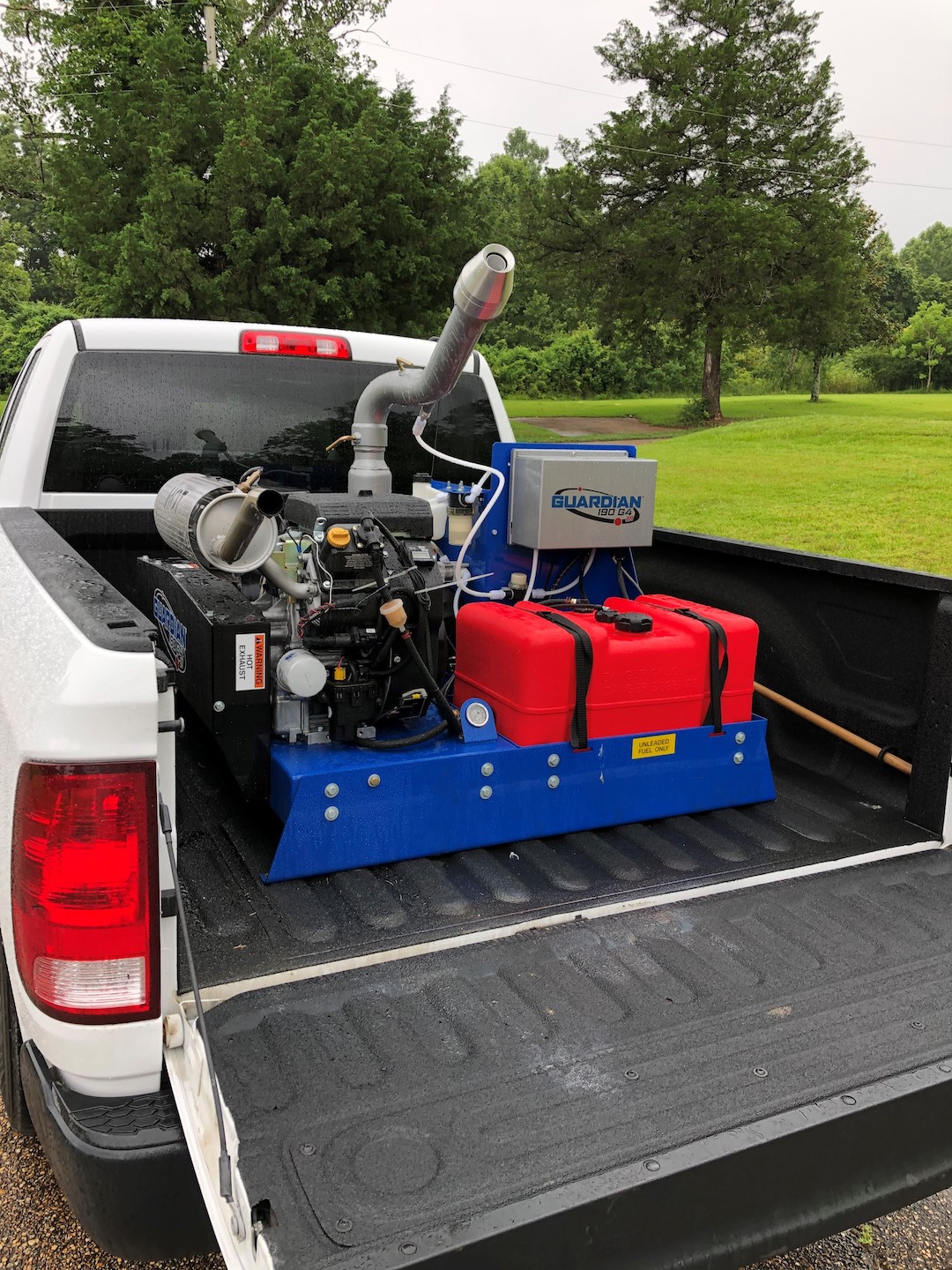
Photo © 2020 by Jerome Goddard, PhD
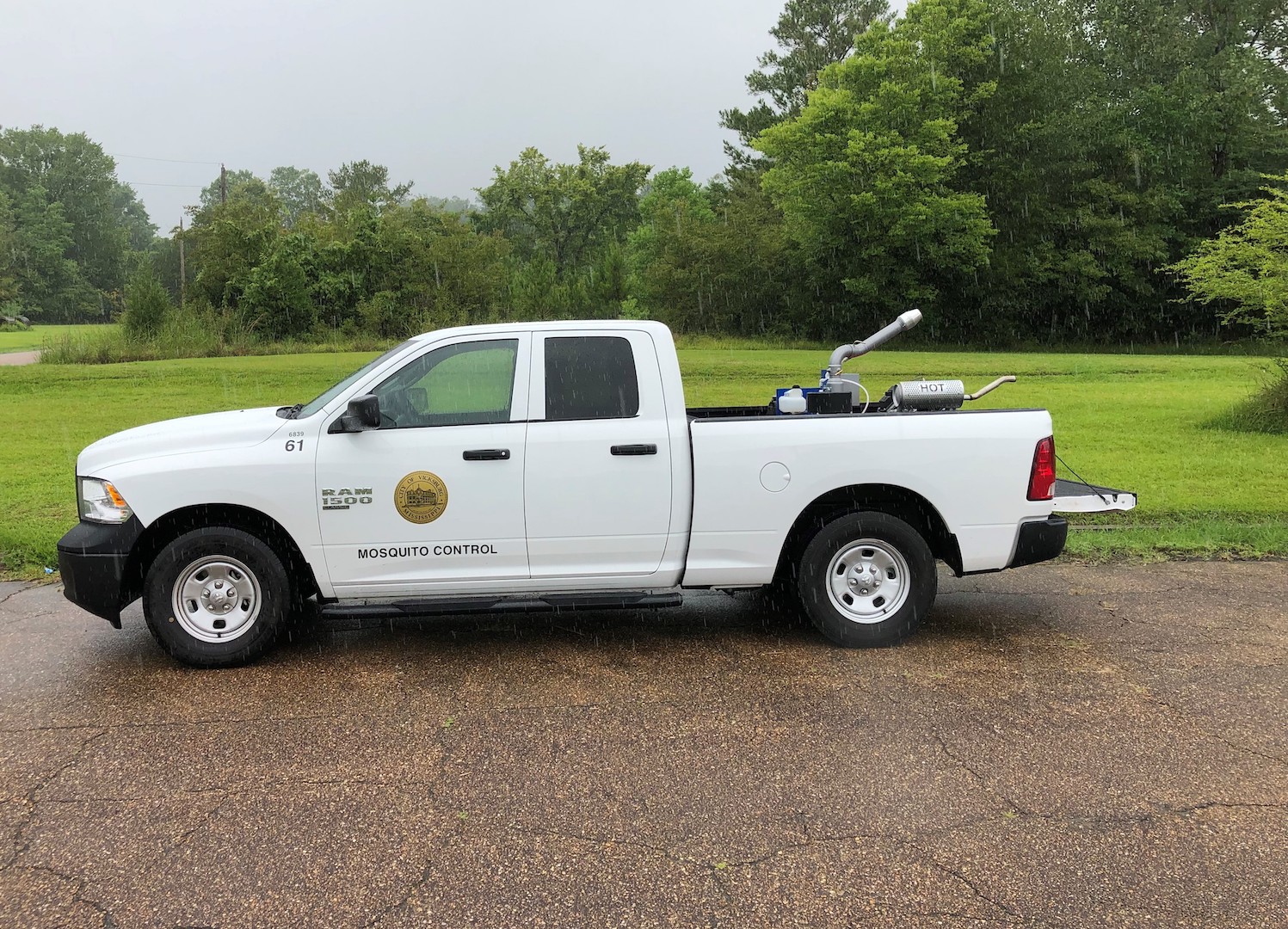
Photo © 2020 by Jerome Goddard, PhD.
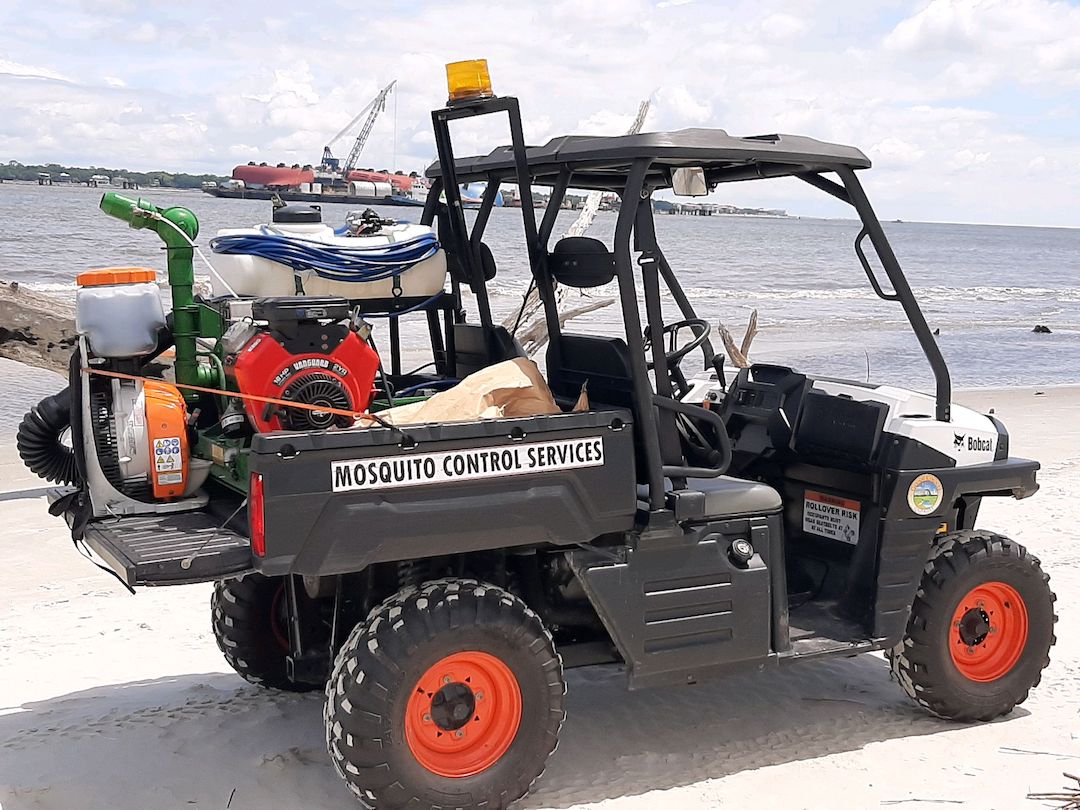
Photo courtesy Sarah McInnis
This work is partially supported by Crop Protection and Pest Management, Extension Implementation Program grant no. 2017-70006-27200/project accession no. 1014037 from the USDA National Institute of Food and Agriculture. Any opinions, findings, conclusions, or recommendations expressed in this publication are those of the author(s) and do not necessarily reflect the view of the U.S. Department of Agriculture.
The information given here is for educational purposes only. References to commercial products, trade names, or suppliers are made with the understanding that no endorsement is implied and that no discrimination against other products or suppliers is intended.
Publication 3500 (12-23)
By Jerome Goddard, PhD, Extension Professor, and Sarah J. McInnis, Graduate Student, Biochemistry, Molecular Biology, Entomology, and Plant Pathology.
The Mississippi State University Extension Service is working to ensure all web content is accessible to all users. If you need assistance accessing any of our content, please email the webteam or call 662-325-2262.


